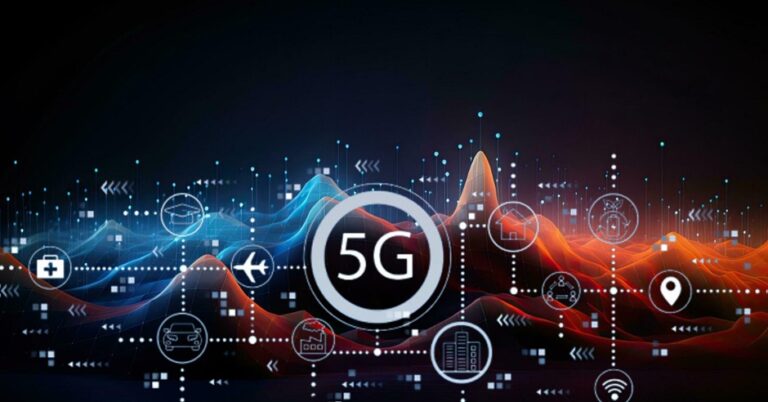
Trådlös and Rörlig with Mobile Network testing & RF Drive Test Tools
5G networks are set to change the next generation of mobile communication infrastructure, bringing advanced solutions and new standards. These networks will exponentially increase wireless capacity, allowing four times more users to connect simultaneously while interconnecting billions of devices. This transformative technology will reshape how modern networks function, leveraging multiple frequency bands to transmit data at various speeds and characteristics. The flexibility of 5G means networks must adapt to the specific data needs of each service and device, necessitating intelligent approaches to enhance spectrum efficiency. So, now let us see How 5G Spectrum Efficiency will change Mobile Communication along with Accurate Mobile Network Monitoring Tools, Mobile Network Drive Test Tools, Mobile Network Testing Tools and Accurate LTE RF drive test tools in telecom & Cellular RF drive test equipment in detail.
5G Massive MIMO & MU-MIMO: Boosting Efficiency
- What is Massive MIMO, and how does it work?
Massive MIMO technology employs numerous antennas to enhance efficiency and transmission power, boosting overall spectrum efficiency. Initially implemented at the gNB and later at the UE side, this technology uses beamforming for data and control channels, enabling rapid UE-specific beam tracking. Multi-user MIMO (MU-MIMO) further optimizes resource utilization.
- What are the additional benefits of Massive MIMO?
Massive MIMO offers several advantages, including the extensive use of low-cost, low-power components, reduced space requirements, simplified medium access control (MAC), and increased robustness against intentional interference.
However, Massive MIMO also presents new challenges. These include the integration of low-cost, low-precision components and the need for efficient connectivity and synchronization of a growing number of integrated terminals. Additionally, managing internal power consumption is crucial for enhancing 5G system and device energy efficiency, especially with the large number of connected devices and applications like critical alarm messaging and traffic safety, which demand reduced latency and high reliability.
How does OFDMA improve uplink efficiency?
OFDMA offers higher efficiency compared to DFT-Spread-OFDM by being more robust against multipath interference, even without an equalizer. By exploiting frequency selectivity and diversity, OFDMA increases overall scheduling efficiency. However, this technique is not suitable for cell edge UEs due to power back-off issues associated with switching between OFDMA and DFT-S-OFDM at the macro site level.
What is the significance of an ultra-lean carrier design?
Ultra-lean carriers minimize always-on transmissions, removing cell-specific reference symbols to save power and reduce interference. MIMO demodulation reference signals (DMRS) are transmitted only when necessary for the MIMO scheme. This approach significantly reduces control overhead by lowering the synchronization signal periodicity from 5ms to 20ms and the Physical Broadcast channel periodicity from 10ms to 20ms.
How does 5G enhance spectrum usage?
5G reduces the guard band at the edge of the carrier, allowing for maximum carrier size mapping to specific bands. By eliminating the guard band between multiple carriers and adapting the operating bandwidth to each UE’s capability and transmitted traffic, 5G achieves fast load balancing and reduces control channel overhead. Compared to carrier aggregation, 5G has less control channel overhead with single PSS/SSS/PBCH and larger allocations, enhancing overall efficiency.
What are the benefits of Dynamic TDD and Full Duplex in 5G?
Dynamic TDD enables fast UL/DL slot adaptation, resulting in up to 50% efficiency gain. Faster UL/DL switching times (intra-slot switching) improve link adaptation accuracy with TDD channel reciprocity, providing higher throughput for bursty traffic at low and medium loads. Future full-duplex systems are expected to increase efficiency by up to 100%, although gains are limited to small cell deployments above 3 GHz unless inter-cell interference coordination is managed.
What are the ITU-R spectrum efficiency requirements for 5G?
The ITU-R report, “Minimum requirements related to technical performance for IMT-2020 radio interface(s),” defines the minimum 5G performance standards. For indoor hotspots, the spectral efficiency is set at 9 b/s/Hz for the downlink and 6.75 b/s/Hz for the uplink. In dense urban environments, the downlink efficiency is 7.8 b/s/Hz, while the uplink is 5.4 b/s/Hz. For rural areas, the downlink is 3.3 b/s/Hz, and the uplink is 1.6 b/s/Hz.
How are 5G proposals evaluated?
Proposals undergo evaluation by multiple independent groups worldwide. Initial simulations and calibrations have been conducted within 3GPP, with 5G-PPP performing simulations within the EU. For example, 3GPP RAN1 calibration for an eMBB dense urban scenario at 4 GHz involved 128 Tx/Rx eNB antenna elements and 4 Tx/Rx per transmission point. Observations showed a wide range of geometries, with some UEs having excellent SINR and almost no extremely poor UEs.
In a rural scenario at 700 MHz, with 64 Tx/Rx eNB antenna elements and 8 Tx/Rx per transmission point, and 2 Tx/Rx UE antenna elements, observations indicated more distributed SINR geometries, with some UEs having SINR below 0 dB but no extremely high SINR values.
How does 5G performance compare to LTE?
5G network performance significantly surpasses LTE, with notable gains in spectrum efficiency, especially when using MU-MIMO for better resource allocation. Appropriate frequency spectrum allocation per service and reliability needs further enhances 5G efficiency. For instance, reserving the 3.5 GHz spectrum for macro cell operation and using frequencies above 6 GHz, including mmWave in the 26/28 GHz bands, for small cells and radio backhauling will optimize performance.
Conclusion:
5G networks are poised to transform mobile communication infrastructure with innovative solutions and new standards. By leveraging multiple frequency bands, Massive MIMO, OFDMA, ultra-lean carriers, dynamic TDD, and full duplex, 5G will significantly enhance spectrum efficiency and network performance. Adhering to ITU-R spectrum efficiency requirements and rigorous proposal evaluations will ensure the successful implementation of 5G, ultimately delivering a revolutionary leap in mobile communication technology. As we move forward, the intelligent and flexible utilization of 5G networks will pave the way for connectivity, efficiency, and reliability, setting the stage for the future of mobile communication. Also read similar articles from here.


















